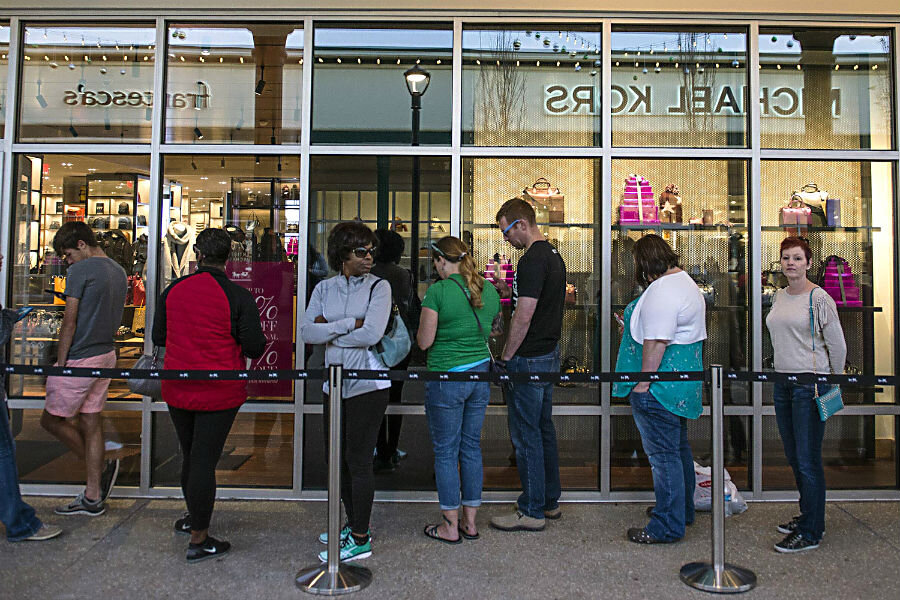Why did Black Friday sales suffer this year?
Loading...
Thanksgiving dinner must have left American shoppers especially lethargic this year: Black Friday sales were down 10 percent from last year’s total revenue – $10.4 billion compared to 2014’s $11.6 billion.
These figures account for brick-and-mortar sales on Nov. 27, but Thanksgiving Day sales also fell this year, despite the sales and promotions beginning earlier. Sales on Thanksgiving fell to a total of $1.8 billion Thursday, down from just over $2 billion last year.
The decline, reported by research firm ShopperTrak, reflects the rising prevalence of online shopping. Retailers this year also offered deals before and after Thanksgiving, softening the impact of Black Friday specials. But financial analysts anticipate an overall increase in holiday sales because of pay rises, lowered unemployment, and lower gas prices.
“This year, we saw Black Friday ads emerge before Halloween, as retailers aimed to get at the shopper’s wallet early,” Kevin Kearns, ShopperTrak chief revenue officer, said in a statement. “And from our data, we saw greater retail sales generated prior to the Black Friday weekend, which is a result of retailers successfully elongating the holiday season.”
But Black Friday, he continued, “is still the biggest sales day of the year and signals the start of the holiday shopping season.”
Logging in from their phones, tablets, and computers, consumers have been able to shop an increasing number of online exclusive deals. Electronic commerce increased by 14.3 percent – bringing in $2.72 billion – on Friday compared to last year’s figures, the Associated Press reports. Promotions in emails also became more effective, driving 25 percent more sales compared to 2014. The figures were accumulated by Adobe, which tracked sales on 4,500 retail websites.
This year, according to Kearns, shoppers were more conscious of sales, even before they began.
“Shoppers are researching products ahead of time, targeting their store visits, and arriving in store with the intention of making a purchase,” Kearns told the AP.
Experts say online sales will continue to increase this holiday season. Chris Christopher, director of consumer economics at consulting firm IHS, told the AP that November and December of this year will see a 11.7 percent jump in e-commerce sales, to total about $95 billion.
His firm predicts that overall, one in every seven holiday retail transactions will take place online.
But e-commerce has been steadily on the rise since 2006. According to US Census data, online sales accounted for 7.4 percent of total retail sales in the most recent quarter – up nearly one percentage point since this time last year.
Nine years ago, online sales accounted for just below 3 percent of total retail, but since then, the rate of growth has hovered around 15 percent.
Still, some shoppers find delight in visiting brick-and-mortar stores. To many, Black Friday offered a spirit of the holidays.
Shannon Britton of Austin, Texas had been shopping around long before the wee morning hours of Black Friday with her daughter and son. Before going home, they visited the local shopping district.
“We wanted to go for fun,” Ms. Britton told The New York Times.








